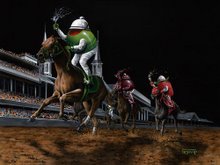Sorry I couldn’t do a Monday Posting. I was having (and still am) a multitude of computer problems. My printer decided it no longer wished to print the color red, so I had to replace it.
While in the process of installing the new printer, my cordless mouse said “screw this, I don’t want to work either”. After solving that, the key board decided to act up. Now, my CD and DVD players have decided that they don’t want to work any more, so now I cannot install any more programs until I can figure out what is wrong.

Now on to today’s posting.
LESSONS IN CIVICS & THE CONSTITUTION – N
Part A
A Return to the Federal Reserve:
Doesn’t the repeal of HJR-192 allow the Federal Reserve to, once again, demand payment in gold for the interest on the public debt, pursuant to the terms of the Federal Reserve Act? Keep in mind that I have already showed you that this act contains a provision made with respect to an obligation purporting to give the obligee the right to require payment in gold, and that provision appears to be back in effect. Now, if this is so, what can we expect to happen when the bankers present their demands, knowing that there won’t be enough gold to meet their demands and no hope of acquiring enough gold.
Any banker worth his salt knows that, in this type of situation, it is foreclosure time, and that means that it is time for distribution of the pool to the last survivors. This paints a picture that is so complex that it is almost beyond comprehension, so I will give you a summary of the important facts. The very same people that said give us the Federal Reserve Charter and we will see that there is stability to our economy, forced us into a recession in 1921, by a contraction of the Federal Reserve requirements of the fractional reserve to the various banks. This contracted the money supply by increasing the reserve requirement from 15% to 20%. They forced a huge liquidity squeeze in 1929, which led to the depression.
This in turn, precipitated our inability to pay off interest on the debt to the Federal Reserve, so in 1933 Congress entered the
Those of you who have been able to follow all of these lessons thus far, may be asking yourselves, how is it that a communistic, religious society that is operated for economic profit, and insurance companies, and the Federal Reserve, totally interlock? In all three cases there was a pool of assets involved. Also, in all three cases, limited liability was involved, which is insurance. Lastly, in all three cases, there was a policy of survivors take all, and that, my friends, is a wagering policy.
In the George Rapp Society, people and property were pledged to the pool. In a tontine, premium payments were pledged to the pool. In the Federal Reserve, premium payments, people and property are all pledged to the pool.
In all three cases, there was no accountability to the members or subscribers. In all three cases, there was forfeiture for withdrawal. In the George Rapp Society it was labor interest and intransmissability of property to heirs. In tontine it was the premiums and the interest thereon. In the Federal Reserve, it is Social Security, Unemployment Premiums, property Tax, etc. for example, what happens if you withdraw from social security, or from unemployment insurance, or stop paying property taxes, isn’t there a forfeiture that is demanded?
In the George Rapp Society, Dr. List’s “National Economy” was practiced on a small scale, in the Federal Reserve, List’s “National Economy” is being used to regulate and control our economy.
In the George Rapp Society there was no risk to the insurer (George Rapp and his associates). In the Federal Reserve there is no risk to the Maritime lender, or the insurance underwriter.
In the George Rapp Society, labor was pledged, and labor was the premium for the privilege of remaining in the society for the chance of “making a profit”. In the Federal Reserve, labor id pledged to obtain the units of credit (Federal Reserve Scrip) to pay the interest to the maritime lender, or the maritime insurance underwriter (which is one and the same under maritime law).
In the George Rapp Society, George Rapp had no vested interest in the lives of the society members. In the Federal Reserve, the Federal Reserve has no vested interest in the life of the
Next Week, October 9th, I will cover a Return to the Federal Reserve – Part B
















|